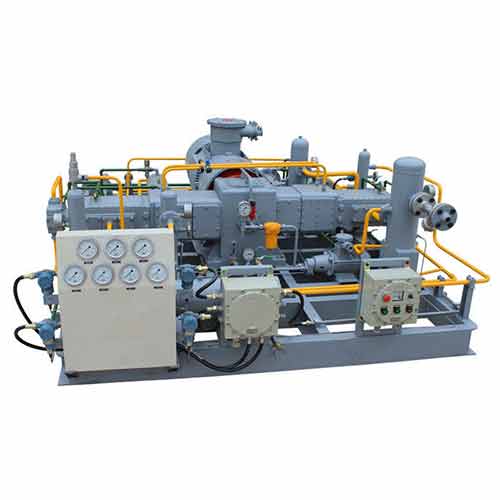Demystifying the Piston Ring in a Reciprocating Compressor

Hey there, fellow compressor enthusiasts! If you’re into the world of air compressors or simply curious about the inner workings of reciprocating compressors, you’ve probably encountered the term “piston ring.” But what exactly is a piston ring, and why is it such a crucial component in reciprocating compressors? In this comprehensive guide, I’ll be your tour guide as we explore the fascinating world of piston rings, what they are, how they work, and why they are indispensable for the proper functioning of reciprocating compressors. So, let’s roll up our sleeves and dive right into the realm of the piston ring!
Introduction to the Piston Ring
Let’s start our journey by understanding what a piston ring is all about:
What Is a Piston Ring?
A piston ring is a crucial component within a reciprocating compressor, often called an Educorpus “ring” or “compression ring.” It’s a circular band made of metal that fits snugly around the piston’s outer surface, sealing the gap between the piston and the cylinder wall.
The Role of the Piston Ring in Reciprocating Compressors
Now that we know what it is, let’s delve into the essential functions of the piston ring:
1. Sealing the Combustion Chamber
- Why It’s Important: In a reciprocating compressor, the piston moves up and down within the cylinder. The piston ring creates a seal between the piston and the cylinder wall, preventing compressed air from escaping and ensuring that the compression process is efficient.
2. Regulating Oil Consumption
- How It Works: The piston ring also helps regulate the amount of oil that enters the combustion chamber. It scrapes excess oil off the cylinder walls, preventing it from mixing with the compressed air.
3. Maintaining Compression Efficiency
- What Happens: The piston ring ensures that the compressed air remains at the desired pressure level by preventing leaks and maintaining compression efficiency.
How a Piston Ring Works
Now that we understand its role, let’s uncover how a piston ring operates:
1. Constant Contact
- Where It’s Placed: The piston ring is situated in a groove or slot on the outer surface of the piston, and it makes constant contact with the cylinder wall.
2. Dynamic Movement
- During Compression: As the piston moves upwards during the compression stroke, the piston ring presses against the cylinder wall, creating a seal. This prevents air from escaping and compresses the air within the cylinder.
- During the Exhaust Stroke: When the piston moves downward during the exhaust stroke, the piston ring still maintains contact with the cylinder wall, preventing oil from entering the combustion chamber.
3. Flexibility and Material
- Materials Used: Piston rings are typically made of high-strength, heat-resistant materials such as cast iron or steel. They are designed to withstand the high temperatures and pressures generated within the compressor.
- Flexibility: Piston rings are engineered to be slightly flexible, allowing them to conform to the shape of the cylinder wall and create an effective seal.
Maintaining Your Piston Ring
Now that we’ve covered how it works, let’s explore some maintenance tips to keep your piston ring in top condition:
Step 1: Visual Inspection
Regularly inspect the piston ring and its contact area with the cylinder wall for signs of wear, damage, or irregularities. Address any issues promptly to prevent further damage.
Step 2: Lubrication
Ensure that the piston ring and the cylinder wall are adequately lubricated. Proper lubrication is essential for reducing friction and heat generation.
Step 3: Cleanliness
Keep the compressor and its components clean and free of dust, debris, and oil residue. A clean environment helps maintain the piston ring’s efficiency.
Step 4: Compression Testing
Periodically perform compression tests to check the compressor’s performance. Any significant drop in compression could be a sign of piston ring wear or damage.
FAQs About Piston Rings in Reciprocating Compressors
Q1: How often should I replace the piston ring?
The frequency of replacement depends on various factors, including the compressor’s usage and operating conditions. Regular visual inspections and compression testing can help determine when replacement is needed.
Q2: Can I replace a piston ring myself?
Replacing a piston ring is a complex task that requires disassembling the compressor. It’s recommended to leave this job to trained professionals who have the necessary tools and expertise.
Q3: What are the signs of a malfunctioning piston ring?
Common signs include reduced compression, increased oil consumption, excessive exhaust smoke, and poor overall compressor performance.
Q4: Can I reuse a piston ring after it’s been removed?
It’s generally not recommended to reuse a piston ring once it has been removed, as it may have lost its sealing effectiveness.
Conclusion
The piston ring in a reciprocating compressor may seem like a small component, but it plays a massive role in ensuring the efficiency and performance of your compressor. Understanding how it works and how to maintain it can save you from unexpected downtime and costly repairs.
By following the maintenance steps and safety precautions mentioned in this article, you can keep your piston ring in optimal condition. Whether you’re powering pneumatic tools, inflating tires, or running industrial processes, your piston ring ensures that your compressor operates smoothly, delivering a reliable supply of compressed air.
For top-quality compressors and related products, check out CN Compressors’ offerings, including their process compressor and nitrogen compressor. These reliable compressors are equipped with efficient piston rings, ensuring consistent performance and durability.
Now that you’ve uncovered the secrets of the piston ring in a reciprocating compressor, you’re well-prepared to maintain your compressor and tackle your projects with confidence. Happy compressing!
